Cane Toad (Bufo marinus) is an intriguing and remarkable member of the Bufonidae family, captivating both nature enthusiasts and scientific researchers alike. Known for its considerable size, the Cane Toad stands out among many other toad species due to its distinctive physical traits and complex behaviors. In this article, we will explore the Cane Toad’s characteristics, behaviors, habitat, ecological importance, and the reasons behind its widespread fascination.
Scientific Classification
- Kingdom: Animalia
- Phylum: Chordata
- Class: Amphibia
- Order: Anura
- Family: Bufonidae
- Genus: Bufo
- Scientific Name: Bufo marinus
Description
Size
Adult Cane Toads can achieve impressive lengths, typically ranging from 4 to 9 inches. Remarkably, exceptional individuals have been recorded at sizes exceeding this range, showcasing the species’ potential for considerable growth. This size not only helps them in their survival but also makes them a noticeable presence in their environment.
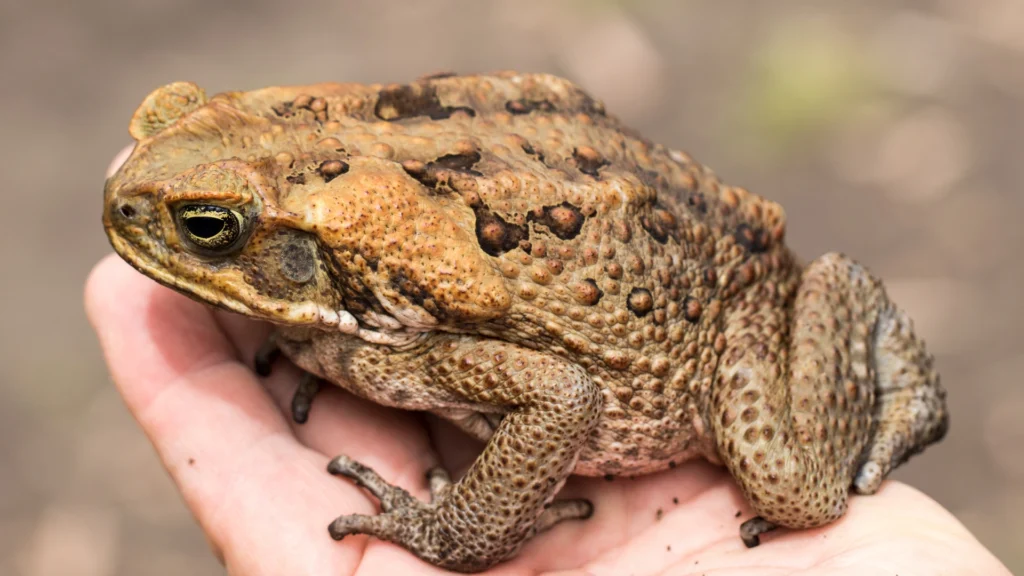
Weight:
These stout amphibians can weigh up to 1.8 kg (approximately 4 pounds), positioning them among the heaviest species within the toad family. Their robust build, coupled with a hardy skin structure, enables them to thrive in diverse environments, offering them an advantage against various predators.
Coloration
Cane Toads exhibit a stunning array of colors, ranging from olive-brown and reddish-brown to yellowish and grayish hues. Their ventral surfaces are typically pale white or yellowish, often embellished with darker mottled patterns that create an eye-catching contrast. This coloration not only aids in camouflage among the foliage but also plays a role in their social interactions.
Head and Body Structure:
Cane Toads possess a distinctive triangular-shaped head that extends prominently from their eyes to their snouts, giving them a unique profile that sets them apart from other amphibians. They are equipped with parotid glands located behind their eyes, capable of secreting toxic substances as a defense mechanism against potential threats. Their skin is characterized by a rough and dry texture, dotted with warty bumps, a feature that enhances their camouflage. Their limbs, while short, are flexible and equipped with webbed hind feet, which greatly enhance their swimming and hopping abilities.

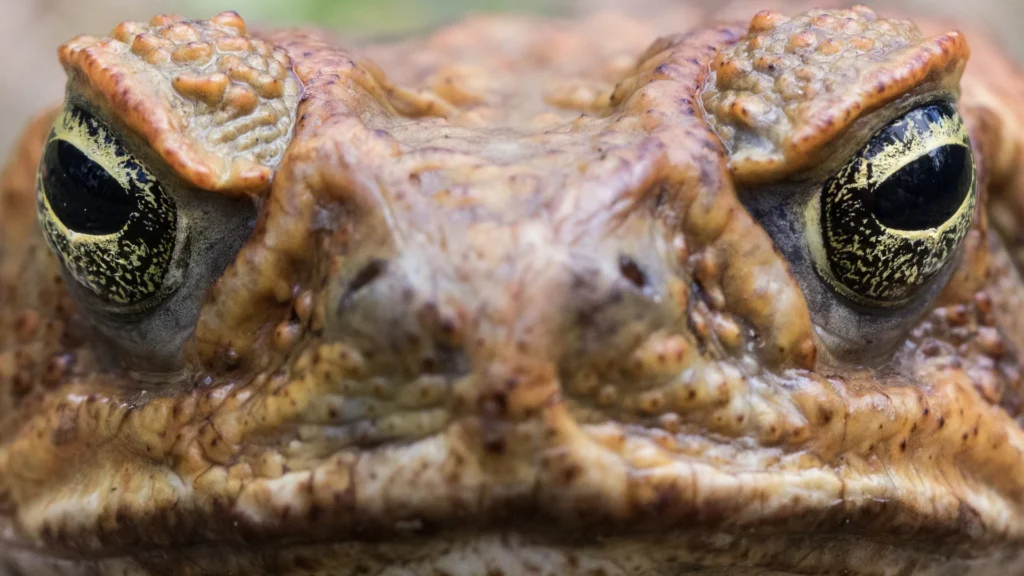
Behavior
Cane Toads exhibit a variety of fascinating behaviors, many of which serve crucial defensive purposes:
Movement
Known for their distinctive upright sitting posture, Cane Toads are capable of executing short hops with remarkable agility. This allows them to navigate their surroundings effectively and escape from potential threats.
Nocturnal Activity
Primarily nocturnal, Cane Toads become active at night to forage for food and explore their habitats. This behavior helps them avoid many daytime predators and take advantage of cooler temperatures and increased moisture.
Habitat Preference
These toads thrive in humid environments, often found near freshwater sources such as ponds, marshes, and rivers. In captivity, it is essential to replicate similar humidity levels in their enclosures to promote their health and well-being, mimicking their natural habitat as closely as possible.
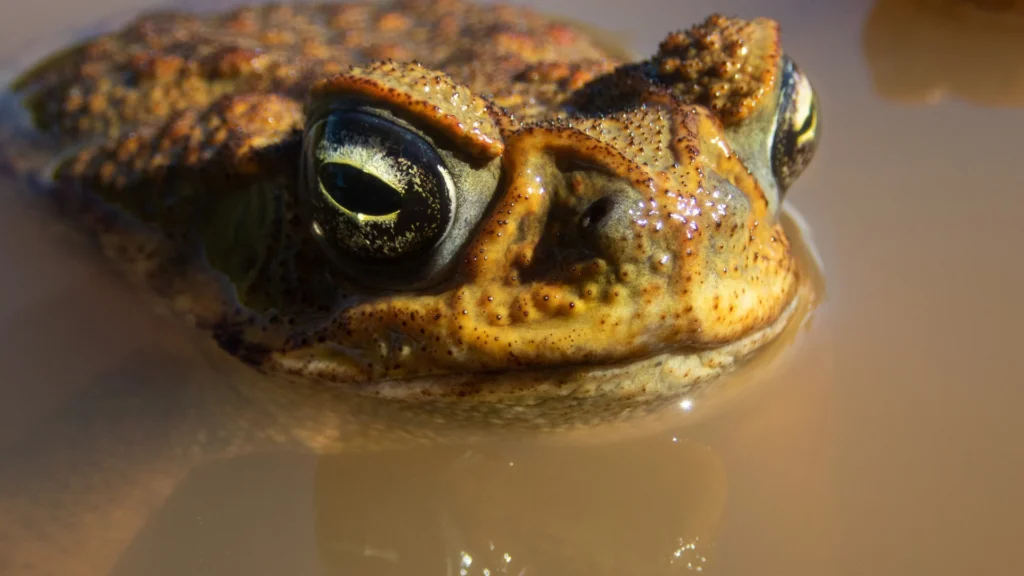
Mating Calls
During the breeding season, male Cane Toads produce loud, resonant calls to attract females. These calls contribute to the nighttime symphony of sounds that characterize their habitats, creating a vibrant atmosphere during the mating season
Diet
Cane Toads are carnivorous and exhibit a highly adaptable diet. While their primary food sources consist of a wide array of insects—including beetles, crickets, and cockroaches—they are also known to consume small animals such as lizards, tiny birds, frogs, fish, worms, and even young Cane Toads. This opportunistic feeding behavior allows them to flourish in various habitats and make the most of available resources, showcasing their versatility as predators.
Distribution and Habitat
Originally hailing from the tropical regions of South and Central they have significantly expanded their range due to human intervention. They have been introduced to numerous areas, including Venezuela, the Caribbean, the Philippines, Puerto Rico, Florida, Hawaii, and Australia. Cane Toads typically inhabit subtropical forests adjacent to water bodies but have demonstrated remarkable adaptability, thriving in urban environments, gardens, and drainage systems. Their reproductive cycle is closely tied to shallow water, making proximity to water sources essential for their life cycle.
Adaptability, Breeding, and Survival Strategies
cane toad (Rhinella marina) is a fascinating amphibian with a complex life cycle and remarkable adaptability. Despite its common name suggesting a connection to marine life, cane toads do not live in the sea. Instead, they are typically found in freshwater environments. Interestingly, laboratory experiments have shown that cane toad tadpoles can tolerate salt concentrations up to 15% of seawater, an extraordinary feat for an amphibian. Recent field observations on Coiba Island in Panama confirmed the survival of tadpoles and toadlets in salinities as high as 27.5‰, showcasing their remarkable tolerance to varying conditions.
Cane toads are highly adaptable creatures, occupying diverse habitats, including open grasslands, woodlands, and human-modified areas like gardens, drainage ditches, and agricultural lands. Their ability to thrive in urban and suburban environments is a major factor behind their invasive success. In their native range, cane toads can also be found in subtropical forests, though dense foliage in these areas can limit their spread. These environmental preferences contribute to their ability to colonize a wide range of regions, which is a key reason for their rapid expansion in areas like Australia, Florida, Hawaii, and other parts of the world.
cane toad’s life cycle begins with the female laying eggs in long strings within freshwater bodies. A single female can lay between 8,000 to 25,000 eggs at once, which can stretch up to 20 meters (66 feet) in length. The eggs, black in color and about 1.7–2.0 mm in diameter, are covered by a jelly-like membrane. As the eggs develop, they hatch into tadpoles within 48 hours, although this timing can vary from 14 hours to several days depending on temperature conditions. The tadpoles, which are small, black, and have short tails, form groups and begin their transformation into juvenile toads. This process typically takes between 12 and 60 days, with four weeks being the most common duration for their development.
Interestingly, both the eggs and tadpoles of the cane toad are toxic to many predators. This toxicity provides an essential defense mechanism during the early stages of their life cycle. As tadpoles develop into toadlets, they are about 10–11 mm in length and undergo rapid growth. The rate of growth varies depending on regional factors, such as climate and the availability of resources. On average, they grow at a rate of 0.647 mm per day during their initial growth phase, which slows to 0.373 mm per day as they mature.
This rapid growth is critical for their survival. While the cane toad’s eggs and tadpoles possess toxins that protect them from predators, young toads lose this protection during their metamorphosis. They must quickly grow large enough to develop the parotoid glands, which produce bufotoxin—the potent substance that helps protect adult toads from predators. However, the transformation from vulnerable juvenile to fully mature toad is fraught with challenges, and only around 0.5% of cane toads reach adulthood. This low survival rate can be attributed to several factors, including predation, environmental pressures, and competition for resources. One particularly disturbing factor is cannibalism among tadpoles. While cannibalism is not uncommon in the native South American populations, the Australian population has shown a 30-fold increase in the likelihood of tadpoles engaging in this behavior. Moreover, the introduction of unnaturally large populations in Australia has led to tadpoles evolving to shorten their developmental phase in response to the presence of older tadpoles, further increasing the incidence of cannibalism.
Sexual maturity in cane toads varies by region. In New Guinea, females reach sexual maturity at a snout-to-vent length (SVL) between 70 and 80 mm, while in Panama, maturity is achieved at 90–100 mm SVL. In tropical areas like their native range, cane toads breed year-round. In more temperate or subtropical regions, such as Australia, breeding is more seasonal and typically occurs during the wet season when warmer temperatures prevail. These breeding patterns are influenced by environmental factors like temperature and rainfall, which impact the availability of suitable breeding sites.
One of the most impressive features of the cane toad is its tolerance to extreme temperature fluctuations. The cane toad has a critical thermal maximum of 40–42°C (104–108°F) and a minimum of around 10–15°C (50–59°F), allowing it to thrive in a variety of climates. Furthermore, they can rapidly adjust to cold temperatures within a few hours, a remarkable adaptation that helps them establish themselves in new environments. This ability to acclimate quickly to changing conditions has made the cane toad one of the most successful invasive species globally, enabling it to invade a wide range of habitats. Some studies suggest that models predicting the distribution of cane toads may underestimate the full range of habitats they can occupy, as their physiological plasticity allows them to adapt to new thermal environments quickly.
they are also highly tolerant of water loss, with some individuals capable of surviving up to a 52.6% loss of their body water. This ability to withstand dehydration allows them to survive in environments outside tropical regions, further expanding their potential range. As a result, they have established invasive populations across the world, from the United States to the Caribbean and the Pacific Islands.
In summary, the cane toad’s impressive adaptability, rapid reproductive cycle, and ability to survive in diverse environments have contributed to its status as one of the most successful invasive species worldwide. While its toxins provide essential defense mechanisms during its early life stages, its rapid growth and ability to survive extreme conditions make it a formidable invader, capable of thriving in both natural and human-modified landscapes.
Predators
In their native habitats, it face predation from a variety of species, including:
Common Predators
They are preyed upon by banded cat-eyed snakes, various killifish species, eels, rock flagtails, ibises, and catfish. These predators play a role in regulating Cane Toad populations in their native environments.
Non-native Predators
In regions outside their original range, they encounter new predators such as Rakali (water rats), whistling kites, water monitor lizards, and black rats. The introduction of these species can pose additional challenges for Cane Toads, contributing to shifts in their population dynamics.
Adaptation Strategies
they have evolved several adaptations to help evade predation:
Inflation
When threatened, they can inflate their lungs, which makes them appear larger and more intimidating to potential predators. This behavior can deter some predators from attempting to attack
Bufotoxin
Cane Toads secrete bufotoxin from their parotid glands when they feel threatened. This potent toxin can be lethal to natural predators and poses a significant risk to humans if ingested. This chemical defense is a key factor in the survival of the species in the wild.
Reproduction and Life Cycle
The mating season for it typically peaks between April and September. During this time, females release large clutches of jelly-like eggs, containing between 8,000 and 35,000 eggs, which males fertilize externally. The eggs hatch into tadpoles within 48 hours to a week, and these tadpoles undergo metamorphosis into juvenile toadlets in a remarkably brief period of just 12 to 60 days. However, only about 0.5% of the tadpoles survive to adulthood, underscoring the numerous challenges they face during their early life stages.
Lifespan
In the wild, Cane it live for an impressive range of 10 to 40 years, with their lifespan being influenced by environmental conditions, availability of food, and predation pressures.
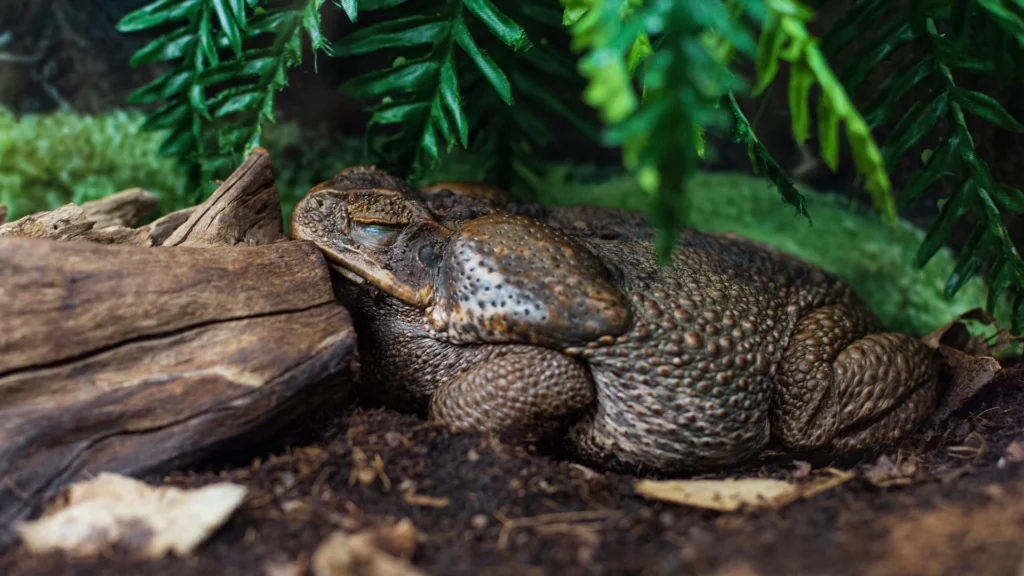
Keeping as Pets
For those contemplating keeping Cane Toads as pets, it is crucial to research local regulations and obtain any necessary permits, as keeping these amphibians may be regulated in certain areas. Here are essential care tips for prospective owners:
Housing
A spacious habitat is vital; a minimum of a 30-gallon tank is recommended. This tank should be equipped with numerous hiding spots, plants, and a shallow water source for hydration, ensuring a comfortable environment for the toad.
Temperature and Humidity
Maintaining humidity levels between 70% and 100% is essential for their health, closely mirroring their natural environment. Temperature should be kept at a range that mimics their native habitats, generally between 75°F to 85°F.
Diet
Cane Toads require a carnivorous diet consisting of small insects such as crickets and mealworms, and on occasion, small rodents to ensure they receive adequate nutrition. It is important to provide a varied diet to promote overall health.
Handling
Due to their toxic secretions, it is advisable to minimize direct handling to prevent potential harm to both the toad and the handler. If handling is necessary, it is best done with gloves to avoid contact with their skin.
Conservation Status
According to the International Union for Conservation of Nature (IUCN), Cane Toads are classified as “Least Concern.” This designation indicates that their populations are stable and not currently facing significant threats. However, their invasive presence in non-native regions can disrupt local ecosystems, leading to concerns about their impact on biodiversity.
Invasive Species: The Cane Toad’s Expansion and Impact
In 1935, at the request of sugarcane plantation owners, the Australian government introduced around 2,400 cane toads to North Queensland to control the cane beetle, a pest that damages sugarcane roots. Without natural predators in Australia, cane toads, known for their ability to eat almost anything and reproduce rapidly, spread quickly across the region. Today, their population in Australia has reached millions, and their range continues to expand, covering thousands of square miles in northeastern Australia.
Beyond Australia, cane toads have also invaded Florida, Hawaii, Guam, the Philippines, the Caribbean islands, the western Pacific islands, Papua New Guinea, and other regions. These toxic toads pose a serious threat to both pets and native wildlife, as animals that bite, lick, or consume them are often killed by their potent venom. Furthermore, cane toads outcompete native species for resources such as food and breeding habitats, further disrupting local ecosystems..
Natural History of the Cane Toad: Breeding and Habitat Adaptability
Cane toads are prolific breeders, capable of reproducing almost year-round. They lay eggs in long strings, with each clutch containing between 8,000 and 30,000 eggs, in freshwater environments. Interestingly, both the eggs and tadpoles of cane toads are toxic. This amphibian is highly adaptable, thriving in a wide range of habitats. Cane toads can be found in urban areas, agricultural lands, coastal dunes, grasslands, and along the edges of rainforests and mangrove swamps. Their versatility in habitat selection contributes to their rapid spread and impact on local ecosystems.
Interesting Facts
- Inflation Defense: The ability of Cane Toads to inflate their lungs serves as an effective defense mechanism, making them appear larger and more intimidating to potential predators. This adaptation can potentially save their lives during encounters with threats.
- Moisture Needs: Although Cane Toads prefer humid habitats, their dry skin is an intriguing adaptation, allowing them to survive in various environments. This feature enables them to inhabit areas that might be too dry for other amphibians.
- External Fertilization: Their reproductive process involves external fertilization, and the incubation period for the eggs can vary significantly depending on environmental conditions, such as temperature and water quality.
- Survival Rate: The survival rate of their offspring is notably low, with only approximately 0.5% of eggs hatching into adults. This statistic highlights the many challenges faced during their early life stages, including competition for resources and predation.
In conclusion, the Cane Toad is an extraordinary amphibian, showcasing a range of unique adaptations and behaviors that reflect the wonders of the natural world. Whether encountered in the wild or cared for as a pet, understanding this species enhances our appreciation and connection to the diverse ecosystems they inhabit. Their complex life cycle, fascinating characteristics, and ecological role make them a subject of ongoing interest and research, reminding us of the intricate balance of nature.

faq’s
1. Are Cane Toads Poisonous?
Yes, Cane Toads (Bufo marinus) are highly poisonous. They secrete a potent toxin called bufotoxin from their parotid glands, which can be fatal to predators and harmful to humans and pets if ingested or absorbed through mucous membranes.
2. What Kills Cane Toads Instantly in Florida?
In Florida, humane euthanasia methods such as applying benzocaine or lidocaine-based products to the toad’s skin can be used to sedate and then freeze them. Physical removal and habitat control are also common strategies for population management.
3. Why Are Cane Toads Illegal in the US?
Cane Toads are considered invasive in many parts of the US due to their destructive impact on native ecosystems. Their toxic secretions pose a significant threat to pets, wildlife, and even humans, leading to strict regulations on their transport and release.
4. Are Cane Toads Still a Problem in Australia?
Yes, Cane Toads continue to be a major ecological issue in Australia. Since their introduction in the 1930s, they have rapidly spread across the country, outcompeting native species, preying on small animals, and poisoning predators that attempt to eat them.
5. Why Are Cane Toads So Successful in Surviving in Australia?
Cane Toads have high reproductive rates, adaptability to different environments, and few natural predators in Australia. Their toxic defense mechanism further protects them from being preyed upon, allowing them to thrive and expand their population.
6. Are Toads Poisonous to Humans?
Some toads, including Cane Toads, produce toxins that can be harmful to humans if ingested or if they come into contact with mucous membranes. Handling them with bare hands is not recommended, and washing hands afterward is crucial.
7. What Is the Biggest Toad in the World?
The Cane Toad (Bufo marinus) holds the title for the largest toad species, with some individuals growing up to 9 inches (23 cm) in length and weighing over 4 pounds (1.8 kg).
8. Are Cane Toads a Problem in Hawaii?
Yes, Cane Toads have become an invasive species in Hawaii. They disrupt local ecosystems by preying on native insects and small animals, while their toxic secretions pose a risk to pets and wildlife.
9. Are Cane Toads Poisonous to Dogs?
Yes, Cane Toads are highly toxic to dogs. If a dog bites or licks a Cane Toad, it can suffer severe poisoning symptoms, including drooling, vomiting, seizures, and in severe cases, death. Immediate veterinary care is essential.
10. Can You Touch Cane Toads?
While touching a Cane Toad is not immediately harmful, their skin secretes toxins that can irritate human skin and be dangerous if transferred to the eyes, mouth, or open wounds. Wearing gloves and washing hands after contact is strongly advised.
11. What’s the Difference Between a Toad and a Frog?
Toads generally have dry, warty skin and shorter legs adapted for crawling, while frogs have smooth, moist skin and long legs designed for jumping. Toads are more terrestrial, whereas frogs are more dependent on aquatic habitats.
12. Why Is the Cane Toad So Successful in Florida?
Cane Toads thrive in Florida due to the warm climate, abundant food supply, and lack of natural predators. Their ability to reproduce rapidly and secrete potent toxins makes them highly successful invaders in the region.
13. What Happens If a Dog Licks a Cane Toad?
A dog that licks or bites a Cane Toad may experience foaming at the mouth, vomiting, disorientation, seizures, and heart abnormalities. Immediate rinsing of the mouth with water and urgent veterinary attention are crucial.
14. Are Toads Poisonous in the UK?
Some toads in the UK, such as the Common Toad (Bufo bufo), secrete mild toxins as a defense mechanism. However, their toxicity is far less potent than that of the Cane Toad and is generally not harmful to humans or large animals.
15. What Happens If a Human Licks a Cane Toad?
Licking a Cane Toad is extremely dangerous due to the potent bufotoxins they secrete. These toxins can cause hallucinations, nausea, increased heart rate, paralysis, and even death in severe cases. Consuming Cane Toad toxins is highly discouraged and illegal in many places.
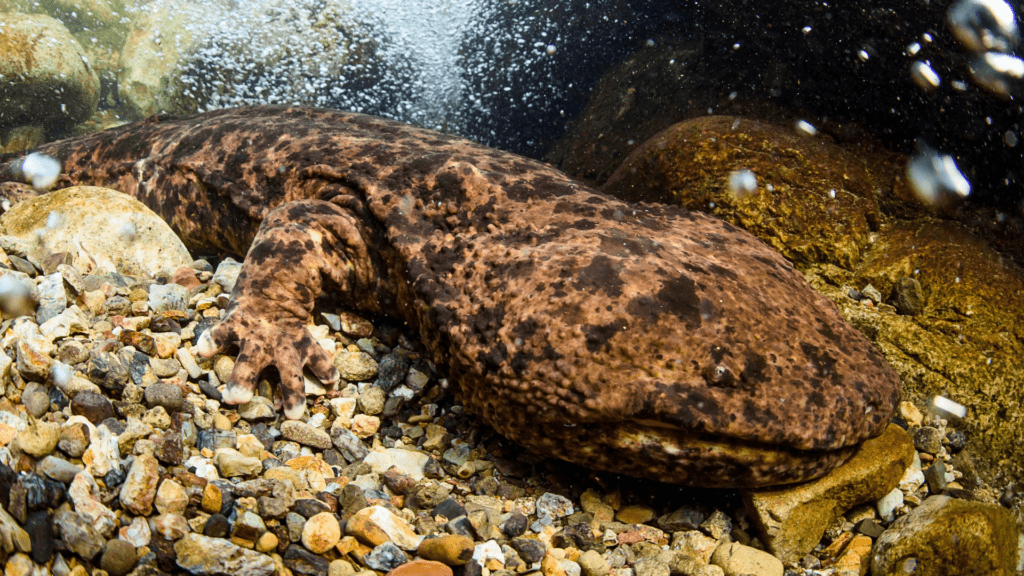
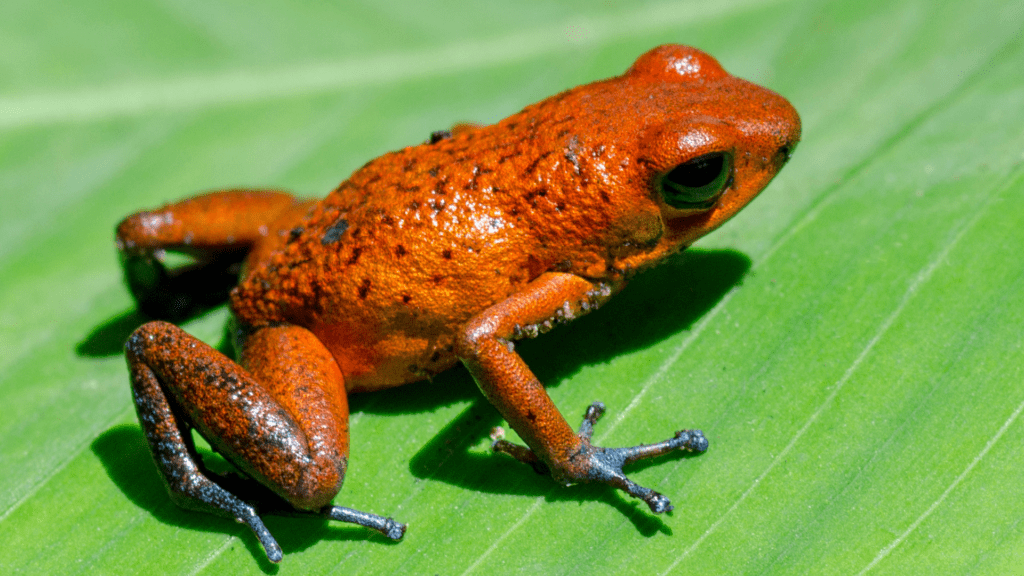
Great blog you have here but I was curious if you knew of any message boards that cover the same topics talked about in this article? I’d really like to be a part of community where I can get comments from other experienced individuals that share the same interest. If you have any suggestions, please let me know. Appreciate it!
Hi there! Thank you for your comment and kind words about the blog! While we focus on providing detailed articles here, I recommend exploring platforms like Reddit or specialized animal forums to connect with communities sharing your interests. Best of luck! 😊